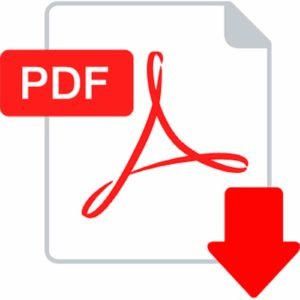Preventing Healthcare Acquired Infections: Staff Education is Crucial
Unified Nursing Research, Midwifery & Women’s Health Journal
Volume 1, Issue 1, June 2020, Pages: 70-78
Received: Mar. 17, 2020; Accepted: Apr. 17, 2020; Published: Apr. 27, 2020
Authors: Veronica M. Hunter, USA
Abstract:
Introduction:
CAUTIs and CLABSIs are the two most common types of HAIs among hospitalized patients in the United States. These infections cause a significant increase in healthcare costs as well as increase length of hospital stays, critical care admissions, increased morbidity and increased mortality rates. Education of frontline nursing staff is a crucial component to promote better outcomes in patients with central lines and indwelling urinary catheters. Education of staff on care and maintenance of these devices increases compliance therefore prevents costly CLABSIs and CAUTIs. Participants were presented with educational information on urinary catheter and central line care, including a checklist for each. Participants utilized the checklists for two weeks and completed a survey at the end of the two weeks. The feedback provided from the participants yielded evidence of improved delivery of care and maintenance of central lines and urinary catheters. The feedback from this project concluded that education of frontline nursing staff is an effective method to increase staff awareness and compliance of prevention measures, therefore, improve care and maintenance of central lines and indwelling urinary catheters and decrease CLABSI and CAUTI rates.
Keywords: Catheter-associated urinary tract infections, central line-associated bloodstream infections, healthcare-associated infections, evidence-based guidelines, infection prevention, central line care, indwelling urinary catheter care
Download Full Article & Abstract here:
Copyright
© Copyright 2020, All Rights Reserved. Use of this content signifies your agreement to the T&Cs of Unified Citation Journals
This abstract of Manuscript/Paper/Article is an open access Manuscript/Paper/Article distributed under the Creative Commons Attribution License (https://creativecommons.org/licenses/by/4.0/) which allows and permits unrestricted use, distribution, and reproduction in any medium, provided the original work is properly cited and accepted.
This communication and any documents, or files, attached to it, constitute an electronic communication within the scope of the Electronic Communication Privacy Act (https://it.ojp.gov/PrivacyLiberty/authorities/statutes/1285)
To citation of this article: Veronica M. Hunter, Preventing Healthcare Acquired Infections: Staff Education is Crucial, Unified Nursing Research, Midwifery & Women’s Health Journal
References:
Atilla, A., Doganay, Z., Celik, H. K., Demirag, M. D., & Kilic, S. S. (2017). Central line-associated bloodstream infections: Characteristics and risk factors for mortality over a 5.5-year period. Turkish Journal of Medical Sciences, 47: 646-652. Retrieved from http://journals.tubitak.gov.tr/medical/
Conley, S. B. & Brown, C. G. (2016). Central line-associated bloodstream infection prevention: Standardizing practice focused on evidence-based guidelines. Clinical Journal of Oncology Nursing, 20(1), 23-26.
Dehghanrad, F., Nobakht-e-Ghalti, Z., Zand, F., Gholamzadeh, S., Mohammad, G., & Rosenthal, V. (2019). Effect of instruction and implementation of preventative urinary tract infection bundle on the incidence of catheter-associated urinary tract infection in intensive care unit patients. Electronic Journal of General Medicine, 16(2), 1-9. Retrieved from https://doi.org/10.29333/ejgm/94099
Gupta, R., Sharma, S., & Saxena, P. S. (2018). Changing panorama for surveillance of device-associated healthcare infections: Challenges faced in the implementation of current guidelines. Indian Journal of Medical Microbiology, 36(1), 19-25. Retrieved from http://www.ijmm.org
Holt, S., Grant, M., & Thompson-Brazill, K. A. (2017). Reducing carbapenem exposure: Extended-spectrum b-lactamase catheter-associated urinary tract infection management. Critical-Care Nurse, 37(5), 78-84. Retrieved from https://doi.org/10.4037/ccn2017648
Johnson, S. (2018). A case study of organizational risk on hospital-acquired infections. Nursing Economics, 36(3), 128-135. Retrieved from http://search.ebscohost.com/login
McEwen, M., & Wills, M. W. (2019). The theoretical basis for nursing (5th ed.) Philadelphia, PA: Wolters Kluwer.
McNeill, Lauren. (2017). Back to basics: How evidence nursing practice can prevent catheter-associated urinary tract infections. Urologic Nursing 2017. 37(4) 204-206. DOI:10.7257/1053-816X.2017.37.4.204
Page, J., Tremblay, M., Nicholas, C., & James, T. (2016), Reducing oncology unit central line-associated bloodstream infections: Initial results of simulation-based educational intervention. Journal of Oncology Practice, 12(1), 83-87.
Palkar, V. & Patel, V. (2016). The impact of disinfectant cap implementation on central line-associated bloodstream infections. Infectious diseases. 48(8), 646-648. http://dx.doi.org/10.3109/23744235.2016.1174339
Tags
Nursing Interventions therapies Journals | Nursing Theory Journals | Health promotion Nursing Journals | Illness prevention Nursing Journals | Rehabilitation & Palliation Nursing Journals | Chronic illness management Nursing Journals | Quality control Nursing Journals | Nutrition & Healthcare Nursing Journals | Family Medicine Nursing Journals | Medical Terminology Nursing Journals | Human Resources Management Nursing Journals | Health care Finance & Accounting Nursing Journals | Epidemiology Nursing Journals | Healthcare System Nursing Journals | Healthcare Management Nursing Journals


